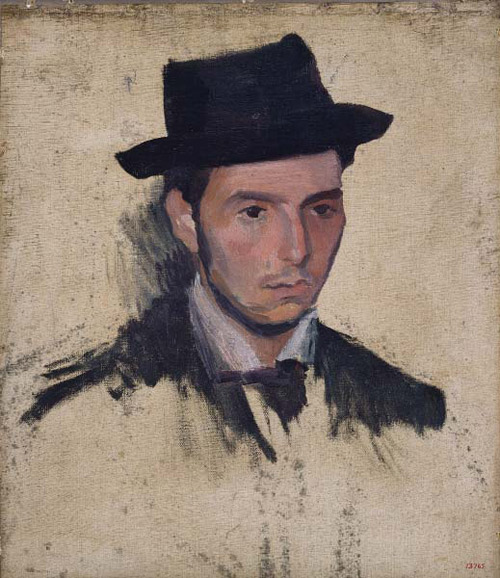

 Ramón Casas, Retrato de Aureliano de Beruete, 1905. Carboncillo y pastel sobre papel, Museu Nacional d´Art de Catalunya, Barcelona.
Ramón Casas, Retrato de Aureliano de Beruete, 1905. Carboncillo y pastel sobre papel, Museu Nacional d´Art de Catalunya, Barcelona.
 Joaquín Torres-García, Retrato de Josep Pijoan, hacia 1900. Óleo sobre lienzo, 50 x 43 cm. Museu Nacional d´Art de Catalunya, Barcelona.
Joaquín Torres-García, Retrato de Josep Pijoan, hacia 1900. Óleo sobre lienzo, 50 x 43 cm. Museu Nacional d´Art de Catalunya, Barcelona.
«The love for the cultivation of the History of Arts was brought to the Institución from the “casa de Riaño”; it is probably its most notable characteristic of its educational programme».
«People are the real subject in history, the combination of their work produces civilization».
Manuel B. Cossío
The Institución Libre de Enseñanza was strongly connected to the creation of the History of Arts as a scientific discipline in Spain. In this process, the role of Francisco Giner de los Ríos, Aureliano de Beruete (who had a double role: as an artist and as a researcher and author of the monography on Velazquez), and Juan Facundo Riaño (who made the first landmark catalogues) ought to be highlighted.
Manuel B. Cossío left testimony himself more than once, for instance, in his book about El Greco, where he writes: « The love for the cultivation of the History of Arts was brought to the Institución from the “casa de Riaño”; it is probably its most notable characteristic of its educational programme and even of its educational influence in the culture of the country».
These initiatives suited ILE’s educational aspirations, that pursued to incorporate the History of Arts to the Secondary School academic programmes (the effort made on this purpose by Hermenegildo Giner de los Ríos deserves to be highlighted) and also at Universities. All these had as a consequence the creation of the first University Chair in this area, whose initial professor was Elías Tormo.
Despite the remarkable precedents of the XIX Century, in order to set the process and make the research on History of Arts institutional and professional, it was necessary to appeal to the job made by a group of professionals associated to the Secciones de Arte y Arqueología del Centro de Estudios Históricos, which was created in 1910 by the Junta para Ampliación de Estudios e Investigaciones Científicas. It is also important the role of the book entitled Summa Artis. Historia general del arte by Josep Pijoan published by Espasa-Calpe, in which Cossío appears as co director of the first volume.